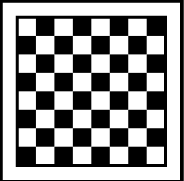Exploring the Intersection of Chess and Mathematics: A Deep Dive into Strategy, Probability, and Problem-Solving
Geometry in Chess: Exploring the Mathematical Foundations of the Game
Chess, often regarded as the ultimate game of strategy and intellect, is deeply intertwined with mathematical principles. From spatial reasoning to combinatorics and probability, the game of chess challenges players to think critically and strategically, much like solving complex mathematical problems. Let’s delve into the fascinating world where geometry meets chess and explore how mathematical concepts enhance players’ understanding and gameplay.
Understanding the Board’s Spatial Layout
Chess is essentially a game of geometry, with the board serving as an 8×8 grid where pieces move according to specific geometric patterns. Knights move in an L-shape, bishops diagonally, and rooks in straight lines. By grasping the geometric layout of the board, players can anticipate potential moves and devise effective strategies. Spatial reasoning, a key component of both geometry and chess, enables players to visualize moves and their impact on the board.
Combinatorics and Chess Complexity
The complexity of chess is intricately linked to combinatorics, the mathematical study of counting and combinations. With 20 possible moves for each player on the first turn, the number of possible positions grows exponentially with each subsequent move. The Shannon number, which represents the total possible chess positions, surpasses the number of atoms in the observable universe. This highlights the immense combinatorial complexity of chess and underscores the importance of strategic decision-making.
Probability and Game Outcomes
Although chess is a deterministic game with no element of chance, probability still plays a role in predicting outcomes. By analyzing the probabilities associated with different moves or openings, players can assess the likelihood of success in specific lines of play. This probabilistic analysis mirrors the mathematical approach of calculating probabilities and making informed decisions based on statistical likelihood.
Decision Trees in Chess
In both mathematics and chess, decision trees are used to visualize potential outcomes of a series of decisions. Players employ similar thought processes in anticipating opponents’ moves and developing strategies. Decision trees represent each possible move as a branch, allowing players to foresee the consequences of different strategies. Chess engines leverage decision trees extensively, evaluating millions of moves per second to determine the optimal move in a given position.
Pattern Recognition and Sequences
Pattern recognition is a fundamental skill in both mathematics and chess. In math, patterns and sequences aid in solving equations and identifying trends, while in chess, players recognize tactical patterns like forks, pins, and skewers to execute strategic moves. By identifying patterns in openings or endgames, players can anticipate moves and implement tactics effectively, showcasing the synergy between pattern recognition in both disciplines.
The Mathematics of Endgames
Chess endgames, particularly pawn and king endgames, involve mathematical concepts such as counting moves and opposition. In a pawn race, players must calculate the number of moves required for a pawn to promote and compare it to the opponent’s count. Opposition, crucial in king and pawn endgames, necessitates calculating and managing distances to outmaneuver the opponent, showcasing the mathematical intricacies embedded in endgame strategies.
Chess Puzzles and Problem Solving
Chess puzzles challenge players to apply logical reasoning and systematic thinking, akin to solving math problems. Each puzzle has a solution based on specific principles and patterns, demanding precision and analytical skills. By practicing chess puzzles, players enhance their problem-solving abilities, reflecting the cognitive processes used in mathematics to solve equations and logical proofs.
Learning from Math to Improve Chess
Adopting a mathematical approach can enhance players’ analytical skills in chess, fostering logical progression, systematic analysis, and abstraction. Concepts like elimination (discarding weak moves) and optimization (choosing the most efficient move) from mathematics can be applied to navigate complex chess positions, enabling players to make informed decisions and strategic choices.
Algorithms in Chess Engines
Chess engines like Stockfish and AlphaZero rely on algorithms rooted in mathematical principles to analyze positions and generate optimal moves. These engines utilize complex evaluation functions, decision trees, and machine learning techniques to evaluate millions of possible moves, demonstrating the intersection of math and technology in chess. By calculating probabilities, optimizing decision trees, and using statistical models, chess engines showcase the power of mathematical algorithms in strategic gameplay.
Teaching Chess to Improve Math Skills
Chess is increasingly utilized as a tool to enhance math skills in educational settings. The game improves spatial reasoning, logical thinking, and pattern recognition, skills that directly translate to mathematical problem-solving. Schools and educational programs incorporate chess to boost students’ cognitive abilities, memory, and critical thinking skills, fostering a holistic approach to learning that benefits both chess and math proficiency.
Conclusion
The intricate relationship between chess and mathematics underscores the intellectual depth and strategic complexity of the game. By embracing mathematical principles such as geometry, combinatorics, and probability, players can enhance their understanding of chess and sharpen their analytical skills. The synergy between chess and math not only enriches gameplay but also cultivates a holistic approach to problem-solving and strategic thinking, making the journey through the world of chess a mathematically enriching experience.
